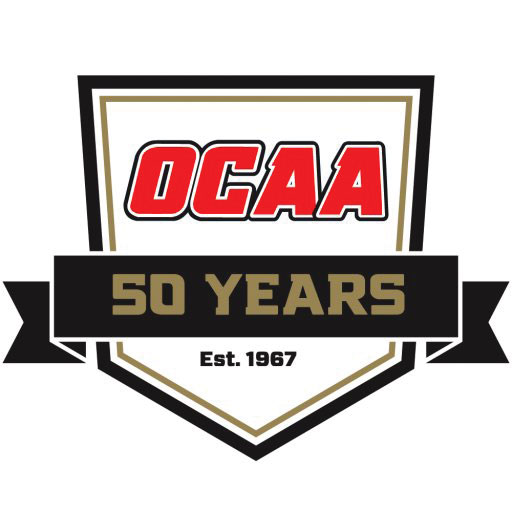By: Ellie Sabourin
As the Ontario Colleges Athletic Association reaches its 50th season, it is a time to reflect on the achievements and changes.
Ron Port, who served as Algonquin College’s athletic director for 30 years, sat down with sweat magazine for a Q&A and talked about how college athletics have changed. Port has had significant ties to the very foundation of the organization as Hal Wilson, the first President of the OCAA, closely mentored him in the early days of his career.
Port himself was also was on the OCAA executive for eight years, including serving as president from 1997-99.
The OCAA was founded on June 9, 1967; and was made up of seven post-secondary
institutions across the province, including Algonquin, Centennial, Fanshawe, George Brown, Mohawk, Northern and St. Clair.
The first members of the OCAA’s Executive Committee included Hal Wilson, President (Algonquin College); Gord Smith, Vice President (Lambton College); and Joe Marko, Secretary-Treasurer (Mohawk College).
Since then, the OCAA Executive has expanded to seven positions: President, Past President, First-Vice President and four Vice Presidents.
In 2003, the OCAA enhanced its lifetime of tradition with the formation of a Hall of Fame. The OCAA Hall of Fame recognizes the accomplishments of the athletes, coaches and builders who have made contributions to the association.
Port created significant change during his time working with college athletics. Besides the renovation of the existing gym, Port also oversaw the creation of a 20,000-square-foot fitness venue, and the installation of the first artificial turf field and removable dome for a Canadian community college.

Q: What first got you into working with the OCAA?
A: My career began at Algonquin College in August 1966. I was hired as a member of the Physical Education Department headed by Athletic Director, Hal Wilson. It was through Hal’s vision and leadership that the Ontario Colleges Athletic Association (OCAA) was formed and that competitive sport programs were developed in the provincial community college system.
Q: How has Hal Wilson influenced you during your career?
A: In those formative years Hal insisted that all members of his staff become active participants in the newly formed Association. As the head hockey coach at Algonquin, I became the Eastern Division Convener of hockey for the OCAA, a position I held for a number of years.
Q: What is your fondest memory of working with Hal?
A: Hal Wilson was my mentor. He gave me the guidance and confidence I needed to make good decisions throughout my athletic career. An example of his dedication to the OCAA is one of my fondest memories. He had thrown his back out prior to an OCAA Annual General Meeting. He was the president and insisted that he still attend. We rented a van, purchased a 4’ X 8’ sheet of plywood, placed it in the baggage area and loaded Hal onto the plywood for the trip from Ottawa to Toronto where the AGM was being held. Hal spent the next three days laying on a table top leading the meetings under his jurisdiction. Nothing was going to hinder the fulfillment of his duties.
Q: Why do you think that college athletics are important?
A: Athletics continues to be a passion of mine. I have experienced it as a player, a fan, a teacher, a coach and a parent. The value of having a successful athletics program is significant in Algonquin College’s branding, student recruitment, student retention, the effect it has on the students, and the effect on the neighboring community.
Q: What do you feel that you learned the most from working with students?
A: Working with students over the years has made me aware of their needs and differences – the same approach does not work for all. I have enjoyed interacting with them, sharing a laugh, developing relationships and, most of all, supporting them in their quest to be the best of the best.
Q:How have you seen college athletics change over the last few years?
A: In its formative years, the OCAA was primarily a male-oriented program. It was not until the early 80’s that women’s competition became part of the OCAA programming. Over the years, the OCAA expanded its activities. The Ontario Colleges Committee on Campus Recreation, operating under the umbrella of the OCAA, was developed to offer students extra-mural tournament play between colleges, and active living programs. In 1974 the Canadian Colleges Athletic Association was born and the OCAA joined in the competitions on a national level.
The growth of college athletics has seen more highly-skilled athletes, improved coaching, e.g. through the analysis of games that are broadcast online, upgraded facilities, enhancements made by the colleges when hosting varsity games and provincial championships to elevate the student athlete’s experience.

